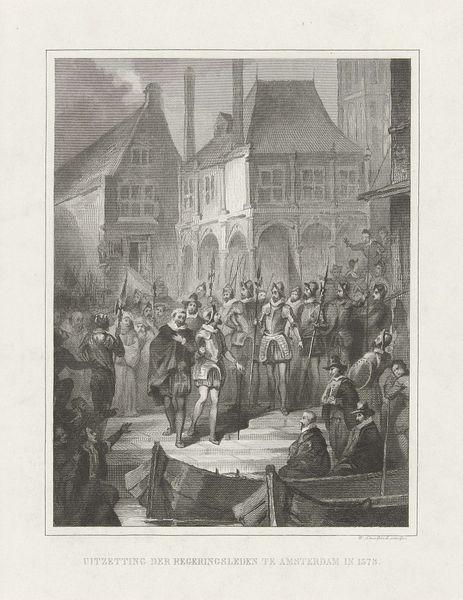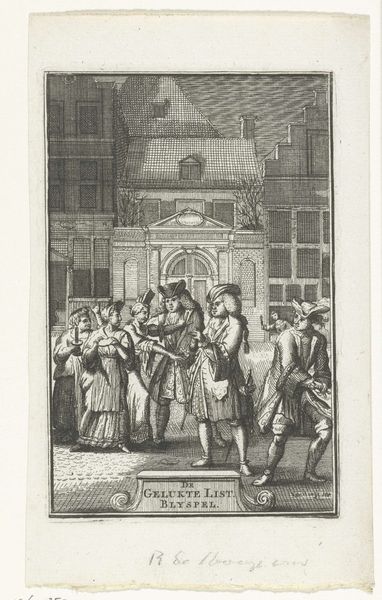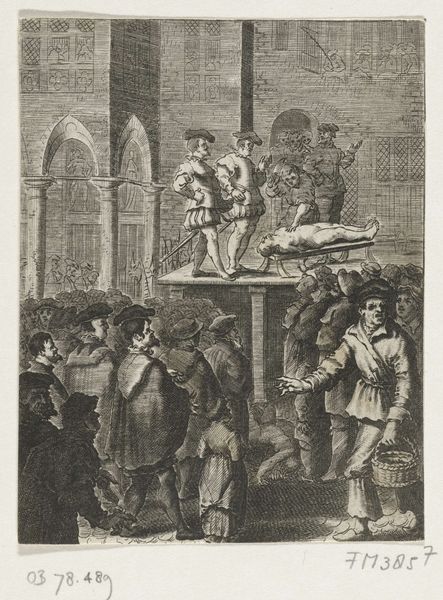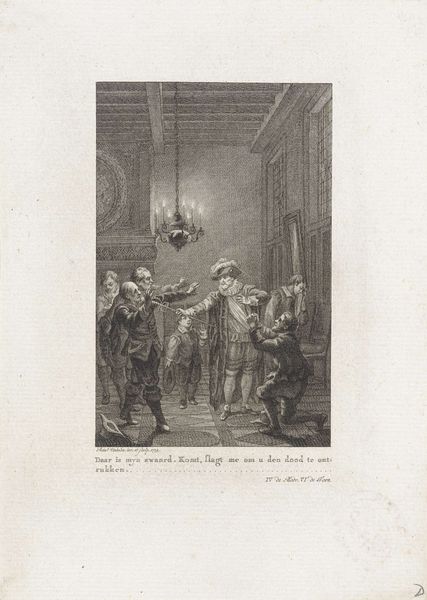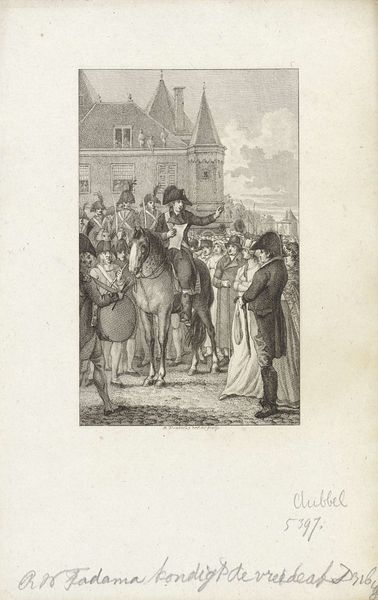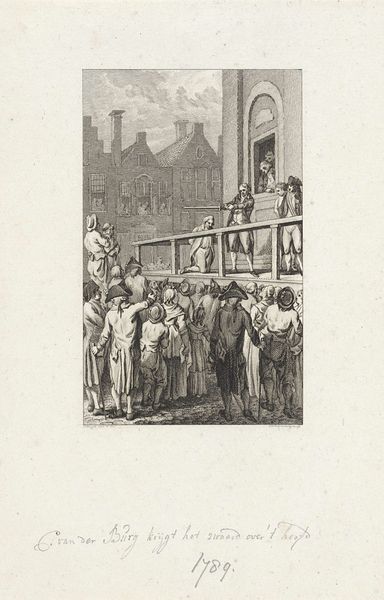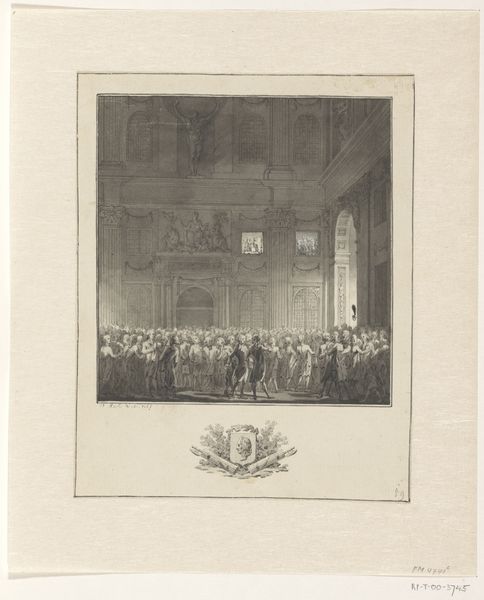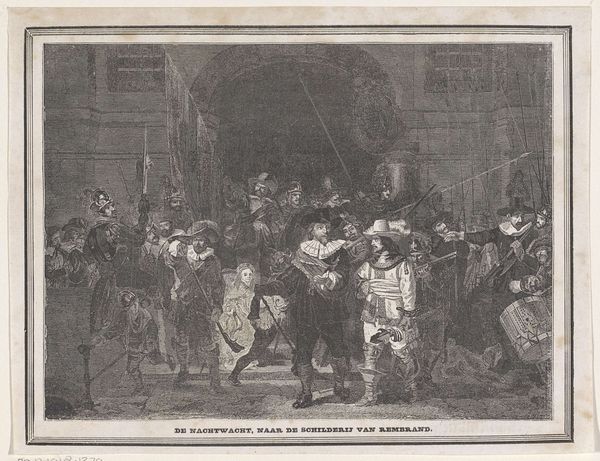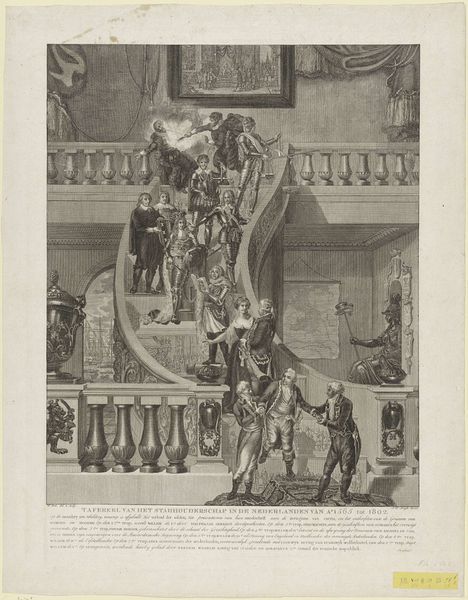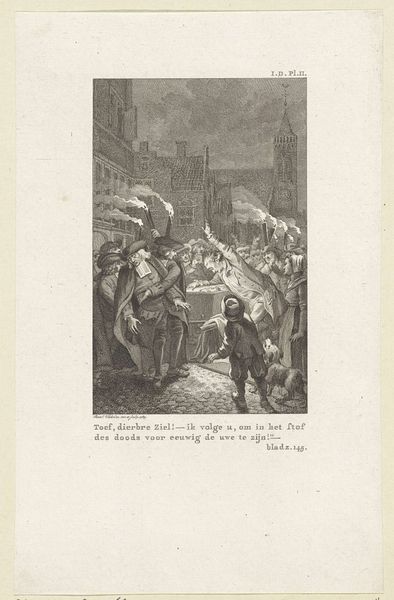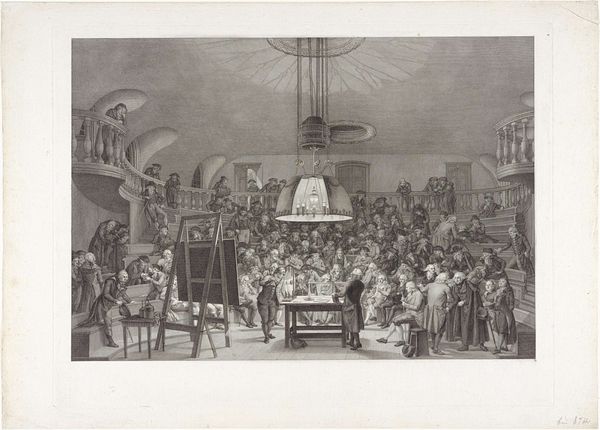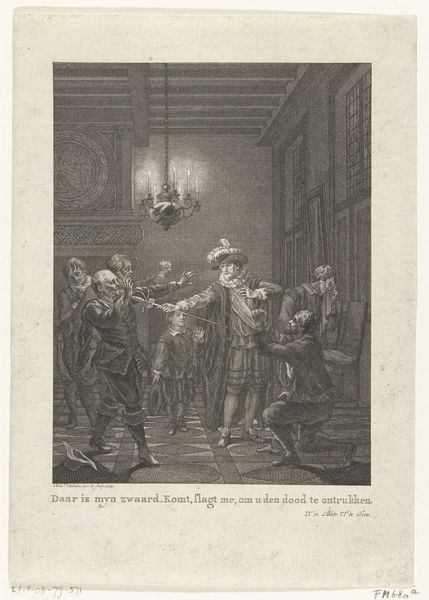
print, engraving
#
neoclacissism
#
dutch-golden-age
# print
#
old engraving style
#
cityscape
#
history-painting
#
engraving
Dimensions: height 232 mm, width 160 mm
Copyright: Rijks Museum: Open Domain
Editor: This print, "Begin van de revolutie in Amsterdam, 1795", by Reinier Vinkeles, made between 1800 and 1802, shows a crowd gathered before a building, possibly a town hall. There's a definite tension in the scene. What strikes you about the formal qualities of this work? Curator: The composition is carefully structured. Notice the stark contrast between the dark masses of the crowd and the regimented lines of the soldiers on the upper tier, and the way light is handled. The architecture serves as a grid to frame the revolutionary energy, yet it’s mostly static. Consider how Vinkeles used line and tone to create depth and emphasize the division of power within the picture plane. What do you notice? Editor: I see how the sharp lines create that clear contrast. But does the linear perspective also enhance this feeling of separation? It seems that only those closest to the building are fully illuminated. Curator: Precisely. The formal properties of perspective, tonal contrast, and spatial arrangement become crucial in decoding the visual power dynamics. Note, however, how Vinkeles has carefully orchestrated the focal point. The raised torch and gestures function as visual prompts. How do they create compositional harmony? Editor: That makes sense, the upward thrust and focal illumination unify the space. By purely observing the form, one can feel the tension between order and disruption being synthesized by the event. Thanks for making me look closely. Curator: Indeed, considering such interplay helps understand the visual experience beyond historical context. Paying such careful attention to composition informs how the narrative reads as a whole.
Comments
No comments
Be the first to comment and join the conversation on the ultimate creative platform.
